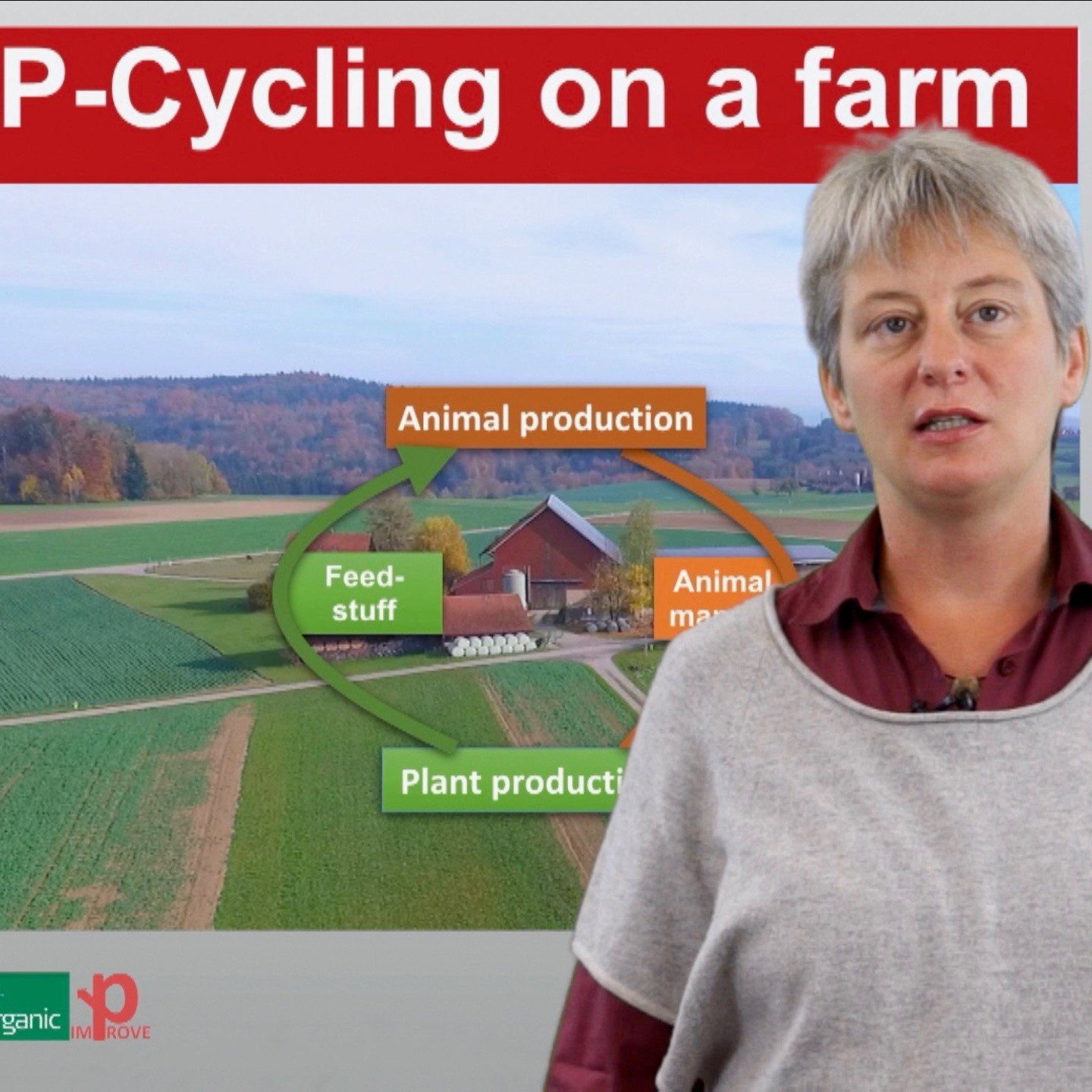Video tutorial: Phosphorus recycling for organic agriculture
The CORE Organic II project Improve-P recently ended. Else Bünemann, Astrid Oberson and Kurt Möller from the Improve-P team summarized the project outcomes in a 30-minute video tutorial with the following eight chapters: Introduction, inventory of available technologies, P availability, risk assessment, life cycle assessment, regulations, stakeholder survey and conclusions.

Else Bünemann of FiBL introduces the video by explaining the relevance of phosphorus. She presents the results of a life cycle assessment, an analysis of different national regulations and a stakeholder survey and compares the pros and cons of recycled P fertilizers in the overall conclusions.
She refers to a recent study in Germany which found that 40 % of the organically managed fields are low in P, indicating a need for P replenishment. Bünemann also explains the actual state of P management in organic farming.
Kurt Möller from the University of Hohenheim then gives an overview of the main sources for P recycling, namely sewage sludge, meat and bone meal, and urban organic waste. He explains how these P sources are treated in different ways to extract the P.
In the Improve-P project, ETH Zurich researcher Astrid Oberson and her team assessed the plant availability of different P fertilizers determined in pot and field experiments. Oberson shows that most P fertilizers tested clearly had a higher P effectiveness than rock phosphate, which is still used as standard P fertilizer in organic agriculture.
When assessing the use of recycled P fertilizers, their potential risks to the soil and to the environment need to be analysed carefully, as Kurt Möller explains. He takes a look at the potential risks posed by pharmaceuticals, organic pollutants, plastics and heavy metals.
Within the Improve-P project, a life cycle assessment was carried out showing that direct field application of recycled fertilizers performed better than sophisticated approaches to extract only the P, as Else Bünemann explains. In the following chapters she gives an overview of the national rules regarding recycled P fertilizers and the results of a survey amongst stakeholders. This survey found that only 25 % of the interviewed stakeholders think that the use of recycled organic fertilizers is bad for the image of organic agriculture. Bünemann concludes that there is more scope for the use of recycled P fertilizers in organic agriculture.
In an overall conclusion, Bünemann compares all recycled fertilizers in terms of P recovery, fertilizer value, potentially toxic elements, organic pollutants and environmental impact.
Else Bünemann of FiBL introduces the video by explaining the relevance of phosphorus. She presents the results of a life cycle assessment, an analysis of different national regulations and a stakeholder survey and compares the pros and cons of recycled P fertilizers in the overall conclusions.

Project coordinator Kurt Möller from the University of Hohenheim explains the Inventory of available technologies and summarizes the results of the risk assessment.

Astrid Oberson, ETH Zurich, compares the P availability of the different recycled P fertilizers.
Related Video: Urban waste products as P fertilizer – an option for organic agriculture
Website: www.improve-p.uni-hohenheim.de
Contact: kurt.moeller@uni-hohenheim.de
Chapters of the video
01:17 Introduction: Relevance of phosphorus